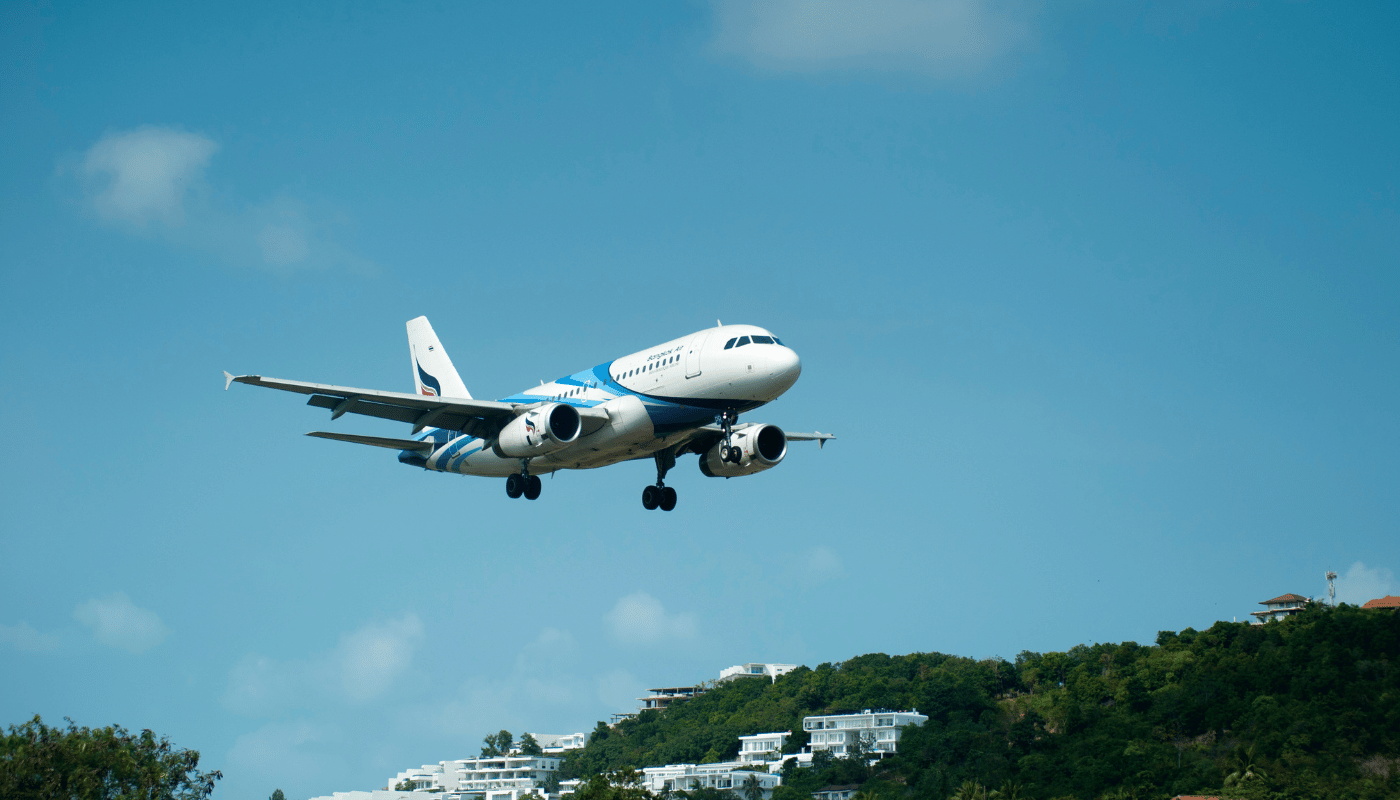Iceland has become a popular travel destination in recent years, attracting tourists with its stunning landscapes, unique culture, and vibrant cities like Reykjavik. However, many travelers notice that flights to Iceland can be quite expensive. Understanding the reasons behind these high costs can help travelers make informed decisions and potentially find ways to reduce their travel expenses. This article explores the various factors that contribute to the high prices of flights to Iceland.
High Demand and Popularity
One of the primary reasons flights to Iceland are expensive is the high demand for travel to the country. Iceland’s natural beauty, including glaciers, volcanoes, hot springs, and the Northern Lights, draws tourists from around the world. The country’s growing reputation as a must-visit destination means that more people are looking to book flights, especially during peak travel seasons like summer and winter holidays.
High demand allows airlines to charge higher prices because travelers are willing to pay more to secure their seats. When a destination becomes trendy, the increased interest can significantly drive up flight costs. Additionally, limited flight availability during these peak times can lead to higher prices as airlines maximize their revenue from the high number of bookings.
Geographic Location
Iceland’s geographic location also plays a significant role in the cost of flights. Situated in the North Atlantic, Iceland is relatively remote compared to many other European destinations. This remoteness means that fewer flights operate to and from Iceland, leading to less competition among airlines.
Longer flight routes typically require more fuel and time, which increases operational costs for airlines. These higher costs are often passed on to passengers in the form of more expensive tickets. Additionally, the limited number of direct flights to Iceland from various parts of the world means that travelers might need to take connecting flights, which can add to the overall cost of their journey.
Fuel Costs and Airline Expenses
Fuel prices are a major factor influencing the cost of air travel. Iceland’s location means that flights to and from the country often involve longer distances, resulting in higher fuel consumption. Fluctuations in global oil prices can directly impact the price of airline tickets. When fuel prices rise, airlines may increase ticket prices to maintain their profit margins.
Moreover, operating flights to a less frequented destination like Iceland can result in higher per-passenger fuel costs compared to more popular routes. Airlines may also face additional expenses related to airport fees, maintenance, and staffing in Iceland, all of which contribute to the overall cost of flights.
Seasonal Factors
The time of year you choose to travel to Iceland can significantly affect flight prices. During peak tourist seasons, such as the summer months and the winter holiday period, flights are in high demand, leading to increased prices. Conversely, traveling during the off-peak seasons can sometimes result in lower airfare.
Seasonal weather conditions also impact flight costs. For example, winter flights might be more expensive due to the need for special equipment and additional safety measures required for handling harsh weather. Additionally, airlines may schedule fewer flights during off-peak times, reducing competition and allowing airlines to charge higher prices to maximize profits during these periods.
Limited Competition
Limited competition among airlines operating flights to Iceland is another reason for higher prices. Iceland has a smaller number of airlines that offer direct flights to its major airports, such as Keflavik International Airport near Reykjavik. When there are fewer carriers competing for passengers, airlines have more control over pricing.
Monopolistic or oligopolistic market conditions mean that airlines can set higher prices without fearing a loss of customers to competitors. In contrast, destinations with many airlines offering frequent and competitive flights tend to have lower prices due to the competition driving fares down.
Taxes and Fees
Taxes and fees imposed by both airlines and governments contribute significantly to the cost of flights to Iceland. These can include airport taxes, security fees, fuel surcharges, and other additional costs that are added to the base fare of the ticket.
Many countries levy specific taxes on international flights, which can vary depending on the departure and arrival airports. Additionally, airlines may impose their own fees for services such as checked baggage, seat selection, and in-flight meals, further increasing the overall cost of the ticket.
Common Taxes and Fees on Flights to Iceland
- Airport Improvement Fees: Charges that go towards the development and maintenance of airport infrastructure.
- Security Fees: Costs associated with maintaining airport security measures.
- Fuel Surcharges: Additional fees to cover the fluctuating price of jet fuel.
- Passenger Service Charges: Fees for various passenger services provided by the airline.
- Customs and Immigration Fees: Costs related to processing passengers through customs and immigration.
Currency Fluctuations
Currency exchange rates can impact the cost of flights to Iceland. Airlines often price their tickets in major currencies like USD or EUR, and fluctuations in exchange rates can affect the final price paid by passengers. If the Icelandic króna strengthens against these currencies, it can make flights more expensive for travelers purchasing tickets in those foreign currencies.
Additionally, the overall economic situation in both Iceland and the countries from which flights are departing can influence ticket prices. Economic instability or significant changes in currency value can lead to higher operational costs for airlines, which may be passed on to passengers through increased fares.
Factors Contributing to Flight Costs
Understanding the various elements that contribute to the high cost of flights to Iceland can help travelers better navigate their booking options. Here is a list of key factors:
- High Demand and Popularity
- Geographic Location and Remoteness
- Fuel Costs and Airline Expenses
- Seasonal Travel Peaks
- Limited Airline Competition
- Taxes and Fees
- Currency Fluctuations
- Operational Costs of Airlines
- Airport Infrastructure and Services
- Regulatory Compliance and Safety Standards
Average Flight Costs to Iceland from Major Regions
| Departure Region | Average Round-Trip Cost (USD) | Major Airlines Operating |
| North America | $600 – $1,200 | Icelandair, WOW Air, Delta |
| Europe | $200 – $600 | Icelandair, WOW Air, British Airways |
| Asia | $800 – $1,500 | Icelandair, Lufthansa, British Airways |
| Australia/New Zealand | $1,200 – $2,000 | Icelandair, Qantas, Emirates |
| South America | $900 – $1,600 | Icelandair, American Airlines |
Infrastructure and Operational Costs
Operating flights to Iceland requires significant investment in infrastructure and maintenance. Airports in Iceland must accommodate the specific needs of international flights, including long runways, advanced navigation systems, and facilities to handle a large number of passengers. The cost of maintaining and upgrading these facilities is reflected in the overall cost of flights.
Additionally, airlines operating flights to Iceland may face higher operational costs due to the need for specialized equipment to handle Iceland’s unique weather conditions. This includes de-icing planes in winter, which adds to the operational expenses. These costs are often transferred to passengers through higher ticket prices.
Environmental Considerations
Environmental regulations and sustainability initiatives are increasingly influencing the cost of air travel. Iceland is committed to maintaining its pristine natural environment, and airlines operating there may need to adhere to strict environmental standards. Compliance with these regulations can result in higher operational costs, which are then passed on to travelers.
Moreover, as awareness of climate change grows, there is a push for airlines to adopt more fuel-efficient practices and reduce their carbon footprint. Investing in newer, more efficient aircraft or sustainable aviation fuels can be costly, contributing to higher flight prices.
Airline Business Models
The business models of airlines also play a role in flight pricing. Full-service carriers that offer a range of amenities and services typically charge higher fares compared to low-cost carriers. While low-cost airlines might offer cheaper base fares, additional services such as baggage, seat selection, and in-flight meals often come with extra fees, potentially making the overall cost comparable to that of full-service airlines.
In the case of flights to Iceland, airlines like Icelandair offer a premium experience with layovers in Reykjavik, which can add value but also increase the ticket price. Budget airlines might offer lower fares but with fewer included services, influencing the overall cost perception for travelers.
Seasonal Variations and Tourism Trends
Tourism trends and seasonal variations significantly impact flight prices to Iceland. During the summer months, when the weather is mild and days are long, Iceland experiences a surge in tourism. This increase in visitors leads to higher flight prices due to the heightened demand. Similarly, during the winter months, when tourists come to see the Northern Lights, flight prices can also rise.
Additionally, global events, such as festivals, sporting events, or international conferences held in Iceland, can lead to temporary spikes in flight prices. Travelers looking to visit during these times may face higher costs due to the increased demand for flights.
Limited Flight Routes and Connectivity
The number of available flight routes to Iceland is relatively limited compared to other major destinations. This limited connectivity means that passengers may have fewer options when choosing flight times, airlines, and prices. Fewer routes can lead to higher prices as airlines capitalize on the limited competition.
Moreover, the lack of direct flights from certain regions requires travelers to take connecting flights, which can add to the overall cost. Each additional leg of the journey increases the total airfare, making flights to Iceland more expensive.
Impact of Global Events
Global events such as pandemics, economic recessions, or geopolitical tensions can influence flight prices to Iceland. For example, the COVID-19 pandemic led to significant disruptions in the airline industry, with reduced flight frequencies and increased health and safety measures. These changes resulted in higher operational costs, which were often passed on to passengers through increased ticket prices.
Similarly, economic downturns can affect both the supply and demand for flights. Airlines may need to adjust their pricing strategies to remain profitable, sometimes leading to higher fares. Geopolitical tensions or conflicts can also disrupt flight routes and availability, further driving up costs.
Conclusion
Flights to Iceland tend to be more expensive due to a combination of high demand, geographic location, operational costs, limited competition, and various taxes and fees. Understanding these factors can help travelers make informed decisions when planning their trips. While the cost of flights may be higher, Iceland’s unique landscapes and vibrant culture offer a rewarding travel experience that many find well worth the expense. By being aware of the reasons behind the higher prices, travelers can explore strategies to find more affordable flights and make the most of their journey to this beautiful island nation.







